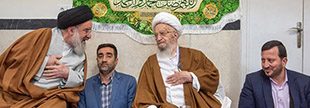Nasrallah’s Role in Hezbollah’s Formation and Rise
Nasrallah returned to Lebanon in the early 1980s, a time when the country was undergoing a significant transformation. The Israeli invasion of Lebanon in 1982 catalyzed the formation of Hezbollah, which was initially established as a paramilitary organization with the goal of resisting the Israeli occupation of southern Lebanon. Nasrallah joined Hezbollah shortly after its founding and quickly rose through the ranks.
Hezbollah was more radical than the Amal Movement, embracing both armed resistance against Israel and the establishment of an Islamic state in Lebanon based on the principles of Shia Islam. The group also forged strong ties with Iran’s Islamic Revolutionary Guard Corps (IRGC), which provided Hezbollah with financial, military, and ideological support. Nasrallah’s ideological alignment with the Iranian Revolution positioned him as a key figure within Hezbollah’s leadership structure.
In 1992, Nasrallah ascended to the role of Hezbollah’s secretary-general after his predecessor, Abbas al-Musawi, was killed in an Israeli airstrike. This moment was pivotal for both Nasrallah and Hezbollah. Under his leadership, Hezbollah expanded its military capabilities, political influence, and social services network, becoming a dominant force in Lebanon and a symbol of resistance across the Arab world.

